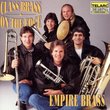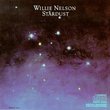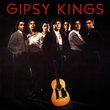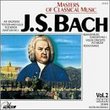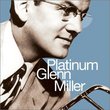| All Artists: Johann Sebastian Bach, Wolfgang Ruebsam, Wolfgang Rubsam Title: Bach: Organ Favorites Members Wishing: 0 Total Copies: 0 Label: Naxos Release Date: 2/15/1994 Genre: Classical Styles: Historical Periods, Baroque (c.1600-1750), Instruments, Keyboard Number of Discs: 1 SwapaCD Credits: 1 UPC: 730099518420 |
Search - Johann Sebastian Bach, Wolfgang Ruebsam, Wolfgang Rubsam :: Bach: Organ Favorites
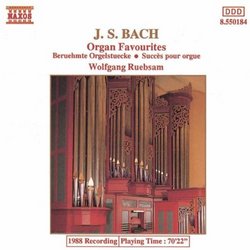 | Johann Sebastian Bach, Wolfgang Ruebsam, Wolfgang Rubsam Bach: Organ Favorites Genre: Classical
|
Larger Image |
CD DetailsSimilarly Requested CDs
|
CD ReviewsBest of its style John L. Turner MD | Deptford, New Jersey United States | 03/30/2007 (5 out of 5 stars) "Wolfgang Rubsam is a major power in the world of Bach keyboard music. His teachers have been only the best: Helmut Walcha; Marie-Claire Alain; Erich Ackerman, and Robert T Anderson in the US. He can play all the standard Organ and other keyboard literature, concentrating on Bach (using organs and pianos). His composite style is less severe and pedantic than Walcha's, humanitarian as Alain's. Teacher, international performer, and master of all music from early to romantic music, Naxos is most fortunate to have him to showcase the works of Bach, in a "sensible" yet thrilling way, and to supervice and plan other large organ projecs, such as Marcel Dupré. John L. Turner, MD, Deptford, New Jersey, US" Too much loudness, too little light relief Leslie Richford | Selsingen, Lower Saxony | 12/13/2004 (2 out of 5 stars) "This was Naxos? first CD ?made in the USA? (August 1988), and for it they engaged German-American organist Wolfgang Ruebsam who gives a polished performance on the grand Flentrop Organ of Oberlin College. Although this is not a historical instrument, it is built on historical principles; its sound is majestic ? and obviously extremely loud ? but the thin Naxos ?booklet? (just a folded card) unfortunately gives no information whatsoever about the size or registration of the organ. Is it the instrument pictured on the front? Naxos fails to tell me.
Ruebsam has chosen for this recital a choice of popular Bach pieces from his early, middle and later periods; the most famous of all is the Toccata in D minor BWV 565 which can here be heard on Track 4. There are, in addition, three Preludes with their fugues (BWV 532, 548 and 552) and the Pastorale BWV 590. This last is the only piece which is played softly and offers a pleasant contrast to the full-blast sound which is to be heard in the other pieces. Good hifi equipment can make these sound quite realistic, but I still had the feeling that the Naxos engineers had captured the organ a little too closely, making for undifferentiated thundering noise in the fugues. A comparison with similar recitals by Piet Kee (Chandos) and Ton Koopman (Deutsche Grammophon) revealed that it is indeed possible to record organ music in a way that is more of a treat for the ears. And for that reason I would recommend looking around for a better buy. " |

 Track Listings (8) - Disc #1
Track Listings (8) - Disc #1